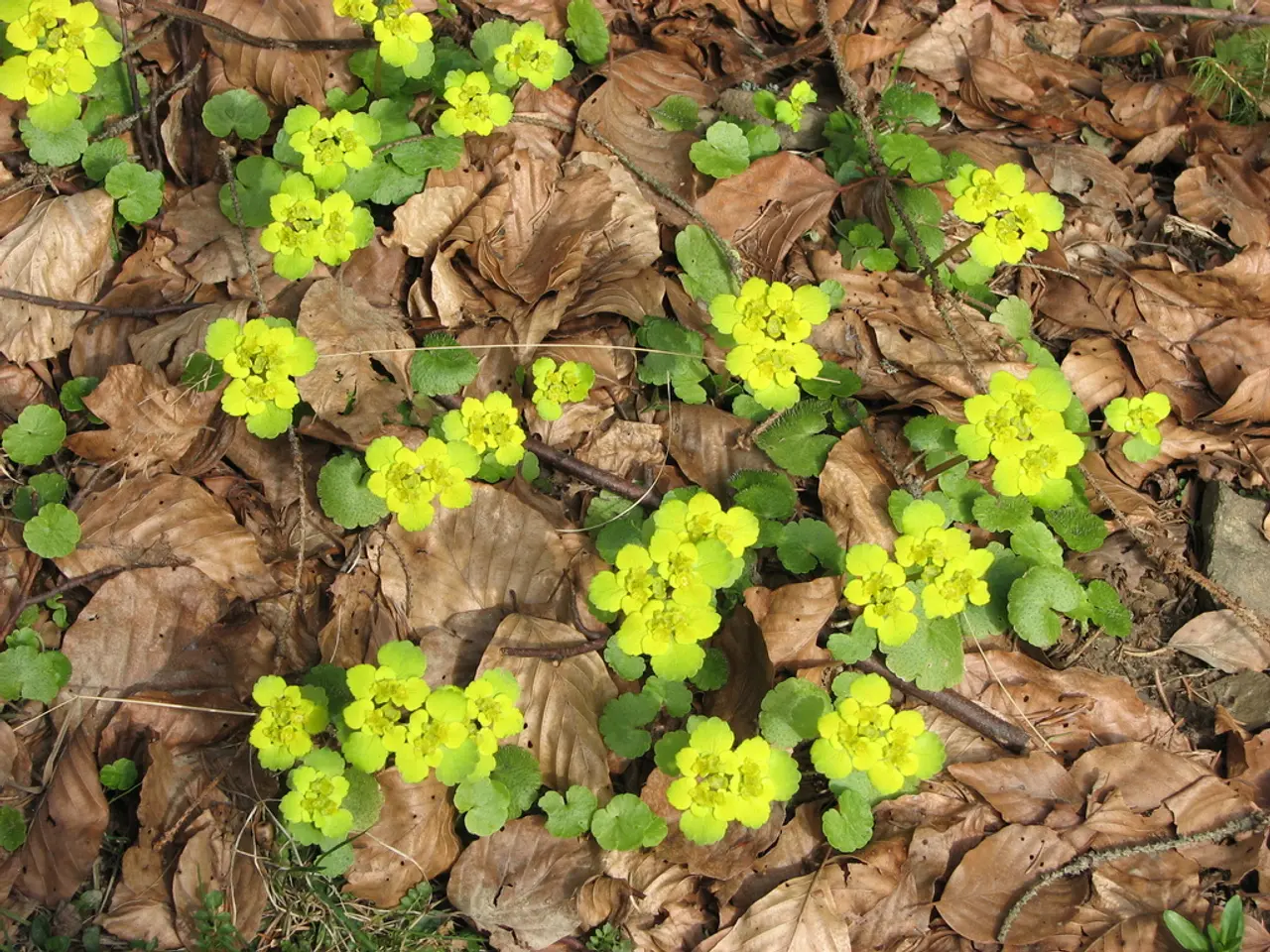Impact of Poor Soil Quality on Plant Development: An Examination
In the intricate dance of life, plants rely on the nutrients and minerals found in the soil to thrive, grow, and complete their life cycles. Adequate soil moisture, improved by increasing organic matter content and mulching, is crucial for the soil's ability to retain moisture, benefiting both plants and the environment [1].
However, soil texture, finer textures having more pores for better moisture retention, plays a significant role in this process. It's not just about having the right nutrients; the way they are managed is equally important.
Unfortunately, excess nutrients in poor soil can be harmful to plants. Over-fertilization can lead to nutrient burn, causing yellowing or wilting leaves, droopiness, and limp stems. Excess nutrients can also damage plant roots, impair their ability to absorb water and nutrients effectively, and disrupt the balance of soil microorganisms necessary for healthy soil ecosystems [2].
Moreover, excess nutrients can leach into nearby water bodies, contaminating them and contributing to water pollution, harming aquatic life [3]. Over time, this can degrade soil quality, affecting future plant growth [4].
High concentrations of sodium (Na+) and chloride (Cl-) ions in saline environments can be toxic to plants, creating a challenging environment for their growth [5]. Poor soil can have high salt levels, making it difficult for plants to absorb water and essential nutrients [6].
Organic matter plays a vital role in improving soil structure by promoting soil aggregation and enhancing soil porosity. It also acts as a sink and source for atmospheric carbon in the carbon cycle [7]. A lack of organic matter can lead to a deficiency of essential nutrients for plants, affect root growth, and reduce the soil's ability to retain and supply these nutrients, hindering plant growth [8].
Fortunately, strategies can be employed to mitigate the negative effects of high salt content in soil. These include maintaining adequate vegetation cover, implementing crop rotations, using gypsum and balanced fertilizers, installing subsurface drains, and adopting smart fertigation systems [9].
Plants exhibit varying levels of tolerance to salinity, with some species having evolved mechanisms to cope with high salt content. Understanding these adaptations can help us develop more resilient crops in the face of changing environmental conditions [10].
Testing the soil for nutrient deficiencies can help adjust the soil composition accordingly, ensuring a balanced and healthy environment for plant growth [11]. By managing our soil effectively, we can support the growth of healthy plants, protect our environment, and contribute to a sustainable future.
Soil science and environmental-science are crucial in understanding the intricacies of soil health and its impact on plant growth. The lifestyle of home-and-garden enthusiasts and gardening enthusiasts can positively influence soil health by incorporating strategies that promote soil aggregation and organic matter, thereby enhancing soil porosity and moisture retention. However, it's important to avoid over-fertilization, as excess nutrients can harm plants and contribute to environmental pollution. Instead, science-based approaches should be used to test soil for nutrient deficiencies and adjust the soil composition for a balanced and healthy environment, supporting sustainable plant growth and a better future.




